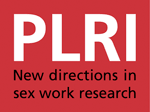Evaluation Of Nature And Impact Of Violence Exposure Among Registered Female Sex Workers
An article in Turkiye Klinikleri J Med Sci 2011;31(5):1167-78. Objective: We conducted a descriptive study to determine various forms of violence and their impacts on registered female sex workers in Turkey. Material and Methods: We surveyed 124 registered female sex workers of a mean age of 41.6 ± 9.1 years, at obligatory periodic examination in the Departments of Dermatology and Sexually Transmitted Diseases at Ankara Metropolitan Municipality Hospital. The researchers developed and validated a questionnaire, based on relevant literature, and administered it to participants via face to face surveys. The questionnaire contained questions about levels of psychological, physical, sexual, financial and public

